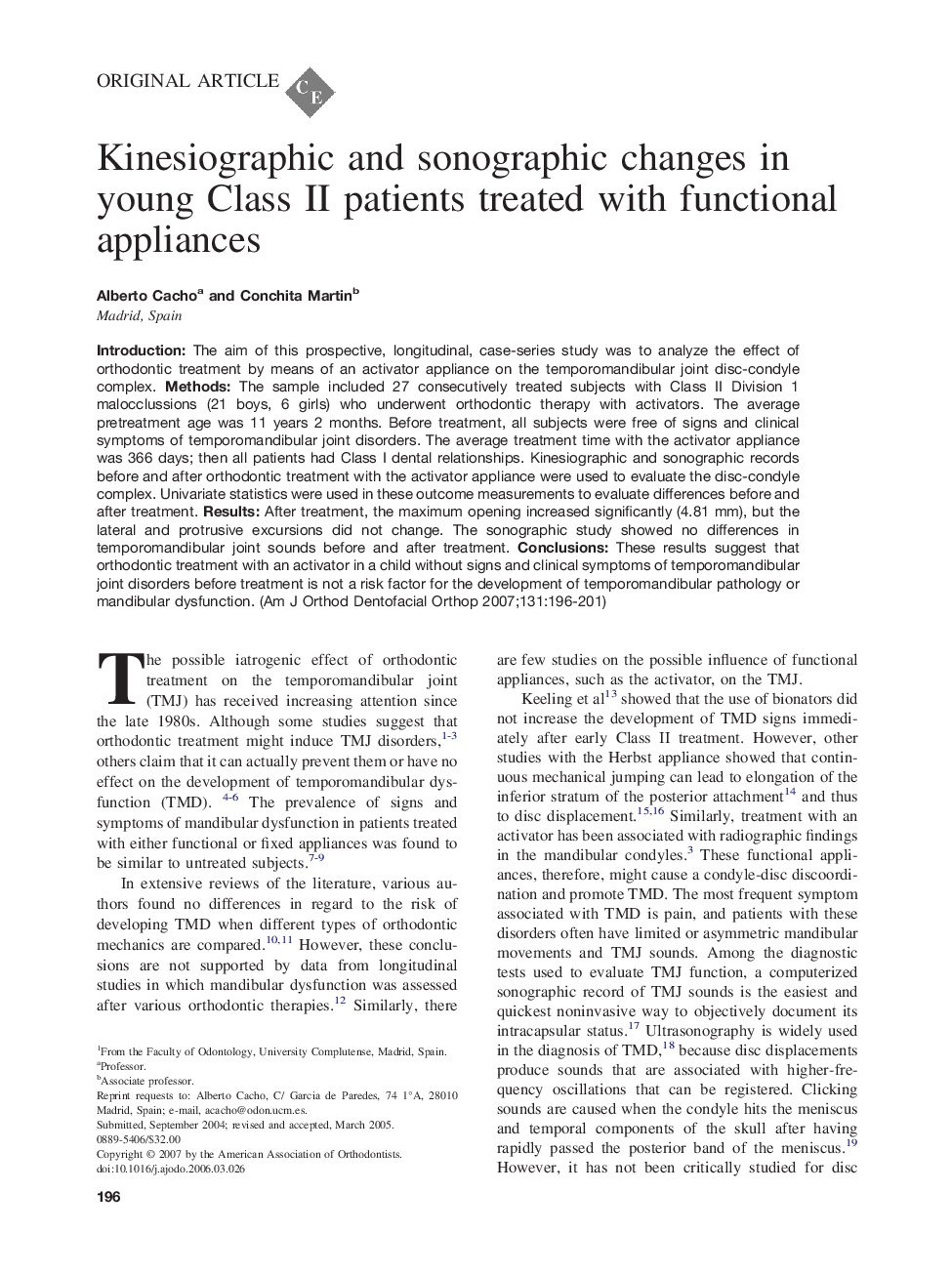| Article ID | Journal | Published Year | Pages | File Type |
|---|---|---|---|---|
| 3119300 | American Journal of Orthodontics and Dentofacial Orthopedics | 2007 | 6 Pages |
Abstract
Introduction: The aim of this prospective, longitudinal, case-series study was to analyze the effect of orthodontic treatment by means of an activator appliance on the temporomandibular joint disc-condyle complex. Methods: The sample included 27 consecutively treated subjects with Class II Division 1 malocclussions (21 boys, 6 girls) who underwent orthodontic therapy with activators. The average pretreatment age was 11 years 2 months. Before treatment, all subjects were free of signs and clinical symptoms of temporomandibular joint disorders. The average treatment time with the activator appliance was 366 days; then all patients had Class I dental relationships. Kinesiographic and sonographic records before and after orthodontic treatment with the activator appliance were used to evaluate the disc-condyle complex. Univariate statistics were used in these outcome measurements to evaluate differences before and after treatment. Results: After treatment, the maximum opening increased significantly (4.81 mm), but the lateral and protrusive excursions did not change. The sonographic study showed no differences in temporomandibular joint sounds before and after treatment. Conclusions: These results suggest that orthodontic treatment with an activator in a child without signs and clinical symptoms of temporomandibular joint disorders before treatment is not a risk factor for the development of temporomandibular pathology or mandibular dysfunction.
Related Topics
Health Sciences
Medicine and Dentistry
Dentistry, Oral Surgery and Medicine
Authors
Alberto Cacho, Conchita Martin,
